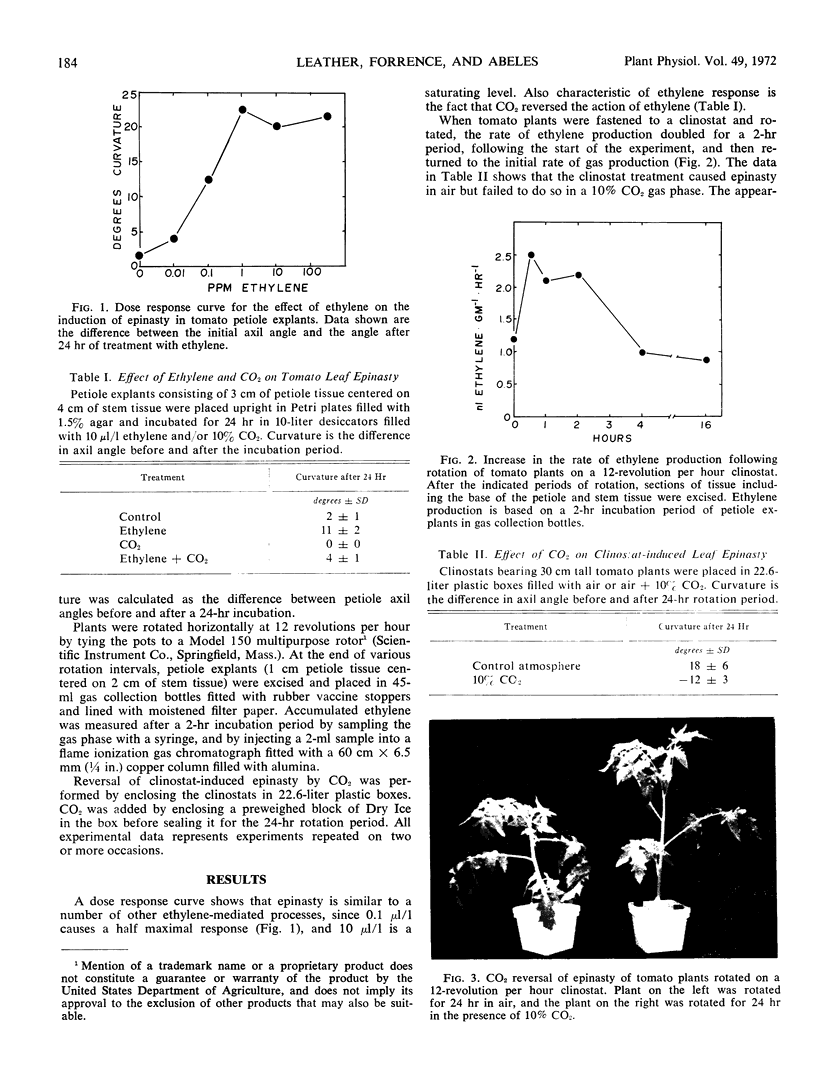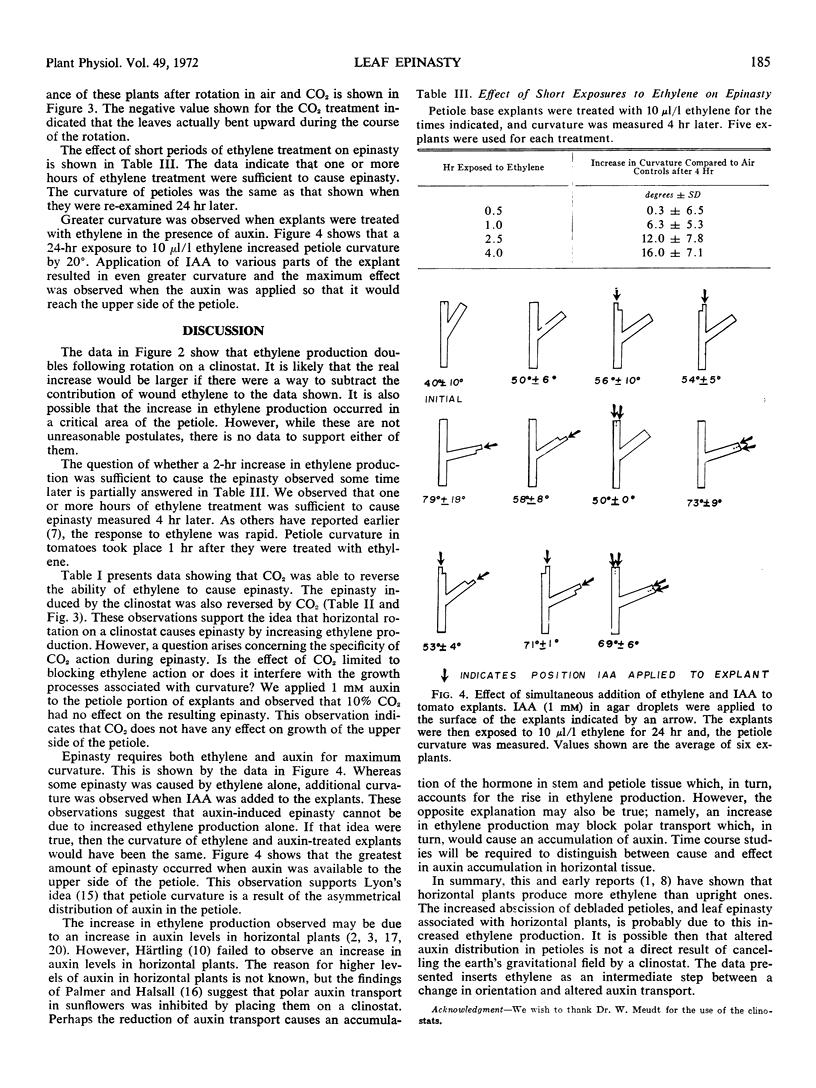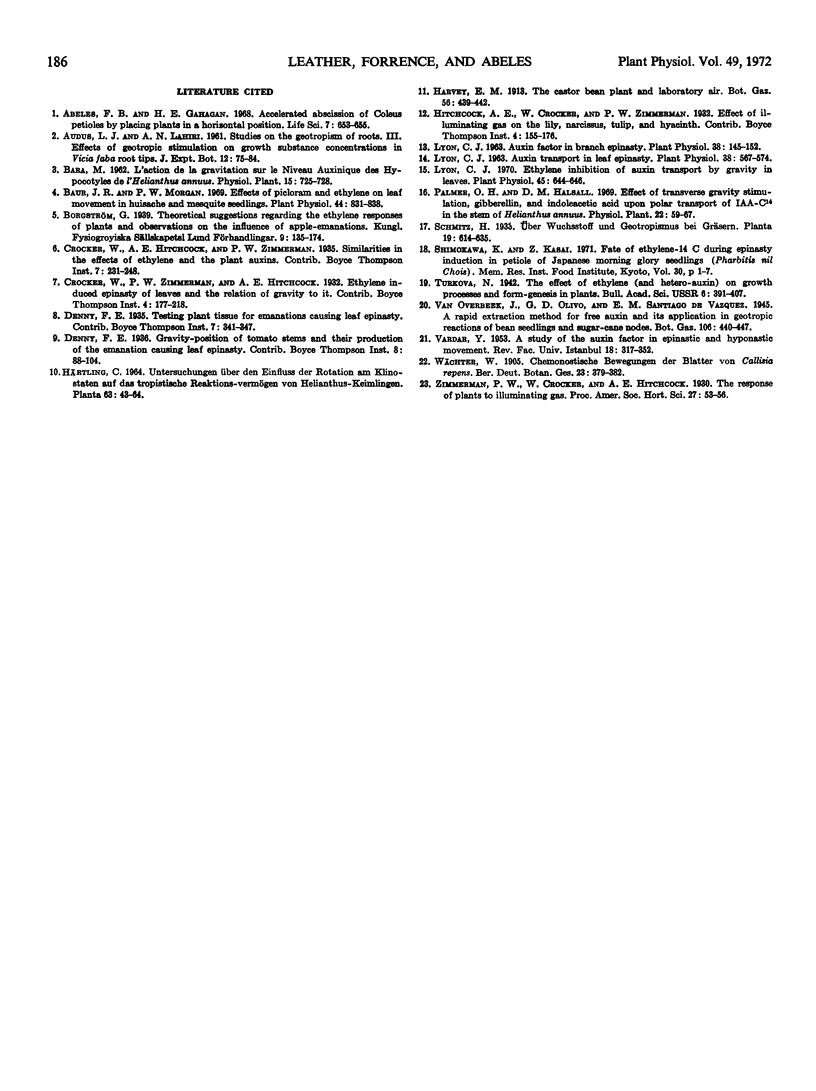Abstract
Ethylene production from tomato (Lycopersicum esculentum L. cv. Rutgers) plants based on a clinostat doubled during the first 2 hours of rotation. Carbon dioxide blocked the appearance of leaf epinasty normally associated with plants rotated on a clinostat. These results support the idea that epinasty of clinostated plants was due to increased ethylene production and not to the cancellation of the gravitational pull on auxin transport in the petiole.
Full text
PDF



Images in this article
Selected References
These references are in PubMed. This may not be the complete list of references from this article.
- Abeles F. B., Gahagan H. E. Accelerated abscission of coleus petioles by placing plants in a horizontal position. Life Sci. 1968 Jun 15;7(12):653–655. doi: 10.1016/0024-3205(68)90089-1. [DOI] [PubMed] [Google Scholar]
- Baur J. R., Morgan P. W. Effects of picloram and ethylene on leaf movement in huisache and mesquite seedlings. Plant Physiol. 1969 Jun;44(6):831–838. doi: 10.1104/pp.44.6.831. [DOI] [PMC free article] [PubMed] [Google Scholar]
- Lyon C. J. Auxin Factor in Branch Epinasty. Plant Physiol. 1963 Mar;38(2):145–152. doi: 10.1104/pp.38.2.145. [DOI] [PMC free article] [PubMed] [Google Scholar]
- Lyon C. J. Auxin Transport in Leaf Epinasty. Plant Physiol. 1963 Sep;38(5):567–574. doi: 10.1104/pp.38.5.567. [DOI] [PMC free article] [PubMed] [Google Scholar]
- Lyon C. J. Ethylene inhibition of auxin transport by gravity in leaves. Plant Physiol. 1970 May;45(5):644–646. doi: 10.1104/pp.45.5.644. [DOI] [PMC free article] [PubMed] [Google Scholar]



